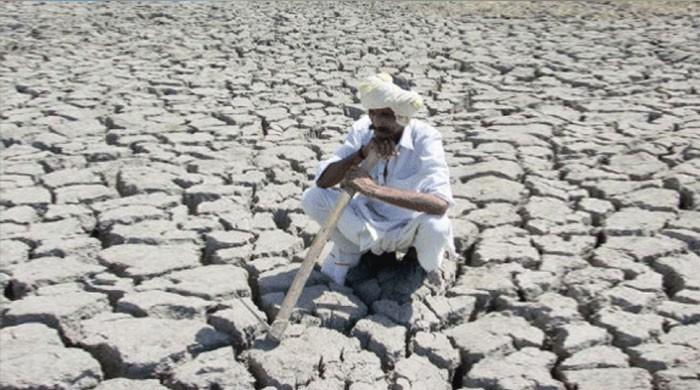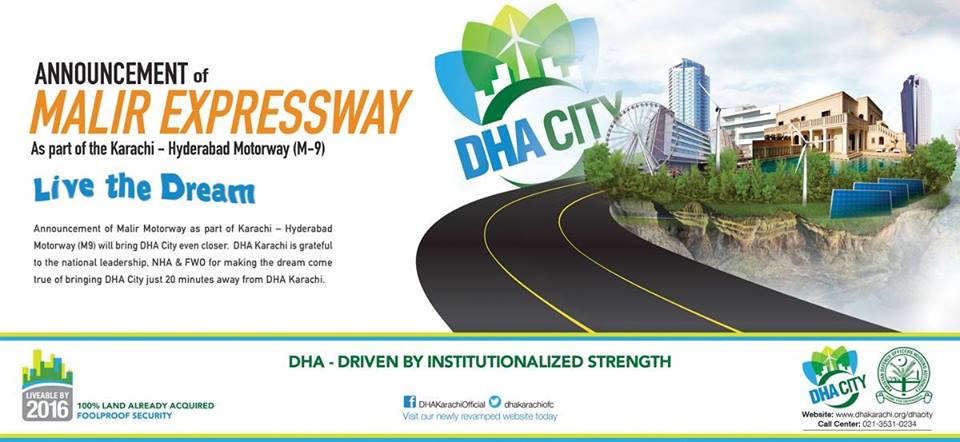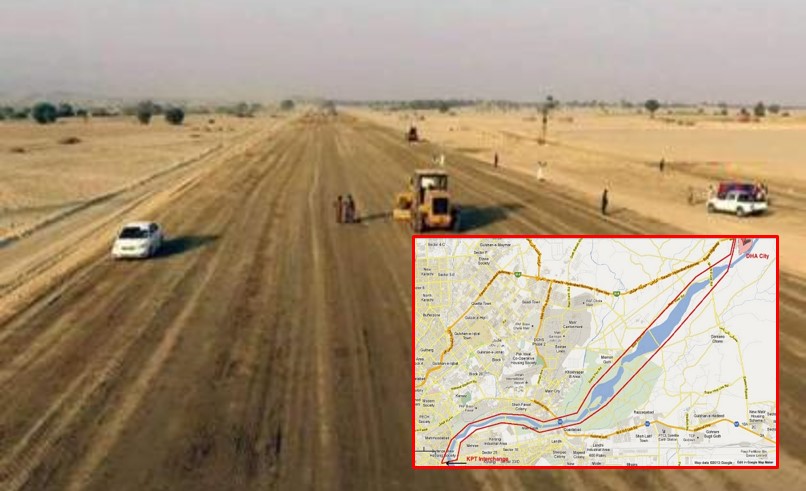So far, what has been confirmed via Environment Impact Assessment (EIA) report of Malir Expressway project and Sindh Environment Protection Agency (SEPA)’ public hearing on March 9, 2022, is the project lack legitimacy on environmental and public health grounds. The area is largely an agricultural land, habitat of many wildlife fauna and a passage for natural river channel which badly needs to be revived rather get dried up. All the operational authorities of the Malir Expressway project, especially its project director and SEPA officials have appeared clearly as failure to address about the sustainability and public viability of the project.
Malir Expressway Project Details
In December 2020 the foundation stone of the project was laid which begins from KPT Interchange, Qayyumabad and ends at Kathore, Karachi-Hyderabad Motorway. The Sindh government has formed a company, Malir Expressway Pvt Ltd to undertake the project, which assigned NESPAK and EMC Pakistan for the project’s study and preparation of the EIA report.
The Malir Expressway project’ estimated cost is nearly Rs 28 billion and executed under a public private partnership model. It is to be 38.5 kilometres-long with 30.9 meters width, having six interchanges and six lanes as well as five bridges and five weigh bridges. The project aims to facilitate travelling and get rid of traffic congestion at the Superhighway. However, it would also displace vulnerable communities and destroy the ecosystem of a vast region.

Environmentalists and social activists including affectees of area, therefore accuse the Sindh government of displacing local habitants and environment degradation of the region in the name of development aimed at easing access for only the privileged. As the mega project would accelerate inhabiting various upscale yet under-development housing schemes situated alongside M-9 Motorway.
Violation of SEPA Rule
The Section 17(1) of the SEPA Act 2014 rules that no construction could be commenced unless the proponent has received an EIA report.
- “No proponent of a project shall commence construction or operation unless he has filed with the Agency an IEE or EIA, & has obtained from the Agency approval in respect thereof.”
But the work on more than 15 kilometres of the project has already been carried on, which is violation of SEPA Act. a Sindh government official present in the public hearing conceded to have kicked off construction work on a 15-kilometre strip of the project without SEPA approval.
Environment at Risk
Malir District has already been subject to land and ecological deterioration for more than two decades. The practice of excavating and stealing of sand, gravel and even water bound macadam from its terrains, plateaus, river banks and adjacent surroundings is common and used in constructing concrete developments specially high-rises in the downtown. Taking out these sand and gravel for building materials has irreparably damaged the underground freshwater reserves, the levels of which continue to fall.

And now, the Malir Expressway project is once again preparing to destroy its remaining orchards, farmlands and vegetation. The EIA report already mentions the project would affect over 2,330 acres of agriculture land where vegetables and fodders are cultivated. Some 1,800 to 1,900 plants and trees of different forms will also be removed. But environmentalists rightly argue the cost of loss of ecosystem is much more than what is written in report.
Malir River’ Significance
The Malir River serves as a significant channel for Karachi drains. It is an ecological asset and every Karachi Master Plan has marked out the region as a green area, because of its wetlands, green cultivation and its biodiversity. Spread over 2,250 sq km, it is not a consistent river but flows nearly a month every year.

There are nine tributaries I it, while the River flows from the northeast to the center of the city and drains into the Arabian Sea. A sizable agricultural land and orchards get benefits from this flow. Its outfall is at Gizri Creek, but when it does not rain enough and the river doesn’t flow out, the sea backs. And, as over the years so much sand and gravel has been excavated from this area for construction in Karachi, that the River underground water aquifer is not replenished or recharged well now.
Human Displacement
Besides, the factor of human displacement hasn’t been covered in the development of the Malir Expressway project. The Project Director claims the ambitious project would create 1000 jobs to the area’ people , but it is also a reality the Expressway is being carried out at the expense of evicting approximately 77,000 families, many of whom ended up homeless and without livelihoods. But the EIA report does not clearly mention the mechanism of resettlement of affected people.
Urban Heat Island
The rapid urbanisation and global warming has triggered an Urban Heat Island effect in Karachi. It is a result of the shrinking of open and green spaces in the metropolis over recent decades, transforming the city into a concrete jungle to the extent that hardly enough open public scpaces left now. So there is a high probability of heatwaves hitting the city due to massive concrete and asphalt that could affect the overall environment of Karachi, including massive ecological degradation and even food shortages.

The area provides fresh fruits and vegetables and playing the role of the city’s ‘Oxygen Hub’. Therefore experts believe that if concrete roadways were to prevail over Malir’s fertile soil, Karachi would lose far more than what it would gain.
Real Estate Benefits
There shouldn’t be any doubt that the execution of the project has begun without considering environment and biodiversity protection. Besides the element of greed cannot be rules out. As many participants raised concern during the public hearing whether the project was actually for the people of Karachi or just to support the real estate developers, who had constructed societies, including Bahria Town Karachi and DHA City, on the outskirts of the city.

If it is, then the timing to execute the project is too early, because so far only 25000 inhabitants are living in Bahria Town Karachi, according to their official data. Many of them have left the scheme or are intending to leave because of higher maintenance and utility charges. While living hasn’t started in the DHA City so far and it would still take years to get populated. But yes with this corridor the real estate prices of the adjacent land and other small housing societies would definitely increase only to benefit land speculators.
By
Editorial, Infocus


